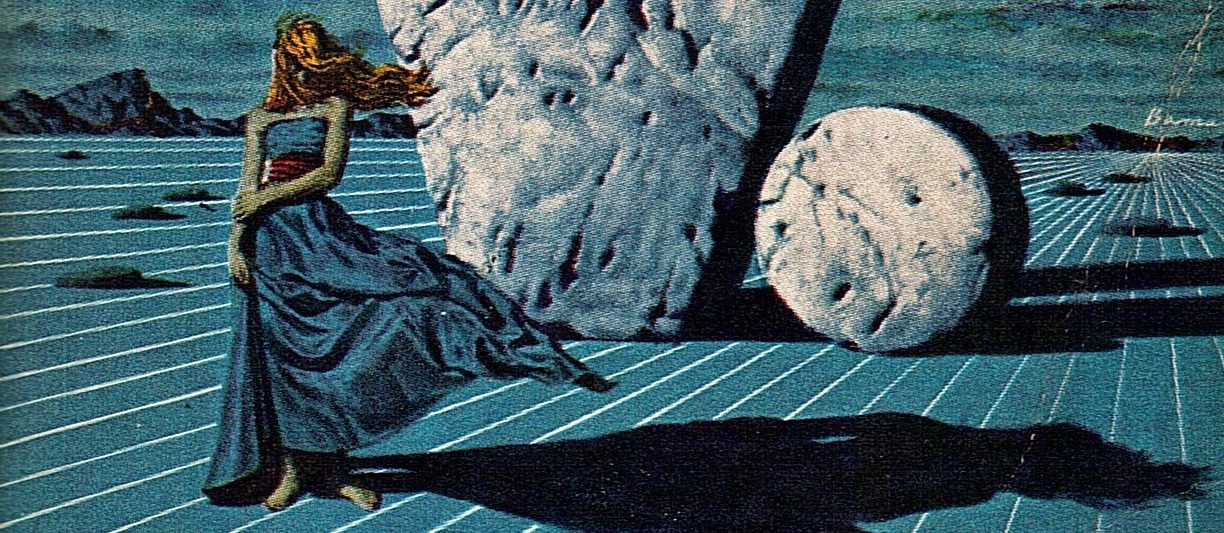

“Keep cool but care.”
I think I may have approached V. incorrectly. After I clawed my way through approximately the first quarter of Thomas Pynchon’s debut novel, I decided to let it roam free from my mental clutches; that I would not attempt to grasp overarching themes or even plotlines. Instead, I would allow the author’s verbose maximalism and extensive and diverse knowledge of language, medicine, electronics, warfare, music, history, and culture (among many other subjects) to steer me wherever it would.
For this, I was richly rewarded with numerous standout sequences where Pynchon travels bravely down strange mental byways and comes back with delightfully peculiar ruminations. But it also left me, as the book neared its end, feeling a bit empty-handed. As if all I had to show for my weeks of mental toil reading myself to sleep were the vaguest of themes and memories of a “human yo-yo” hunting alligators in the New York sewer system and a distressingly vivid description of cosmetic nose surgery.
Poetry is not communication with angels or with the ‘subconscious.’ It is communication with the guts, genitals and five portals of sense. Nothing more.
The book centers on two protagonists: the aforementioned yo-yo Benny Profane and the schlemihl Herbert Stencil. The Profane storyline follows a loose-knit circle of disillusioned dropouts labelled the Whole Sick Crew. The group is comprised of navy deserters, starving artists, prostitutes, deadbeats, and the like, bearing names equal in silliness to those of the main characters; such as Owlglass, Pig, Chiclitz, Angel, Geronimo, Slab, Mafia, Sphere, Eigenvalue. I even jotted the name Father Avalanche in my notes at some point. They get drunk, sleep in bathtubs, fall in and out of love, get into fights, play music, paint portraits of cheese danish, talk to humanoid robots, join cults, and so on and so forth, allowing Pynchon to conjure up a portrait of post-WWII ennui. All of these characters live in some kind of rough harmony in New York City, and all seem to be linked by the island of Malta.
Malta happens to be where Stencil’s father died in a riot in 1919. The other half of the book (although calling it a “half” implies it’s split in two; it’s not) traces Stencil’s impenetrable quest to discover what he can of the mysterious entity known only as “V.” in hopes that doing so will bring him closer to his father. Problem is, V. is an indecipherable enigma. Person, place, object? No one knows. We’re given hints as numerous v-words begin to crop up—Veronica, Vheissu, Venezuela, Vesuvius, Venus, Vera, Viola, Vogelsang, Valletta, I’m sure I missed a few names, not to mention terms like virginity and voyeurism. The epic hunt is elusive and uninhibited; deliberately murky, spanning decades and continents, tangled up with a ragtag gaggle of colorful characters.
Beer had soaked down most of the sawdust behind the bar: skirmishes and amateur footwork now scribbling it into alien hieroglyphics.
And that’s really the point, it seems. Stencil’s quest is ambitious, delving into the expanse of history in search of an illuminative pattern to make sense of the present state of the world. There are several engrossing sections here including a hallucinatory story centering on Kurt Mondaugen (who reappears in Gravity’s Rainbow) which concerns the Herero genocide, the attempted burglary of The Birth of Venus, and a ballet performance that ends with impalation.
But it ultimately becomes tedious, unfocused, and secondary as Pynchon spirals off into discussions of myriad esoteric and ostensibly unconnected subjects. This pulls the focus onto each individual foray down a new, disparate rabbit trail, allowing Pynchon to explore various genres, from espionage to extended jokes to songwriting to nostalgic romance to melancholic reminiscences. In effect, the reader becomes pleasantly disoriented as the storyline “yo-yos” across space and time, allowing incredibly juicy morsels to arrive on the page almost out of nowhere. For instance, a particularly memorable jaunt describes Profane’s sojourn in the underground “parish” of a mad, rogue Jesuit priest who made it his life’s work to convert the souls of sewer rats (one of them is the rat Veronica, who apparently wanted to be a nun).
Pynchon’s debut novel finds him absurdly confident and knowledgeable, nomadically wandering among various genres, eras, and frames. It feels paradoxical at times—accessible but experimental, unified but disconnected, easily digestible but enervating. But now that I’ve surveyed several of his works, such a description seems to be par for the course with Pynchon. Which means, astoundingly, that such a monumental talent burst onto the scene more or less fully formed at a mere twenty-six years old.